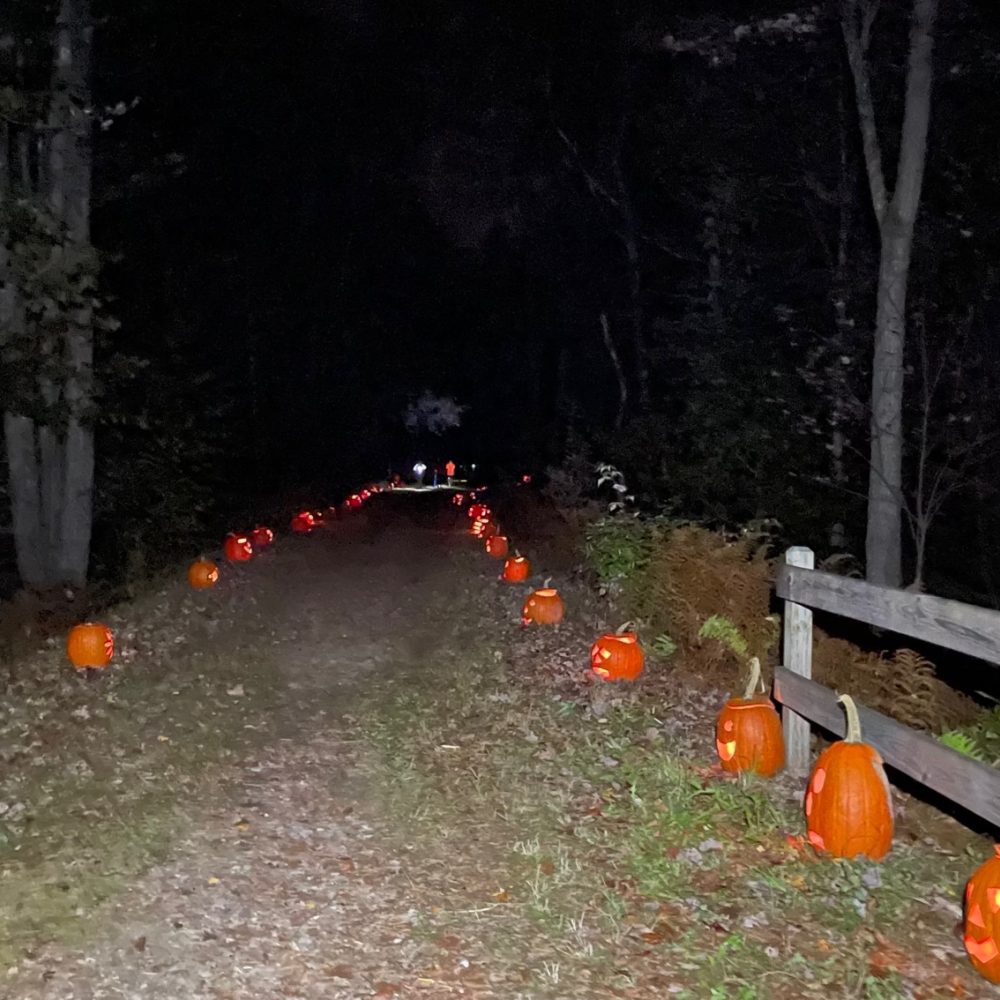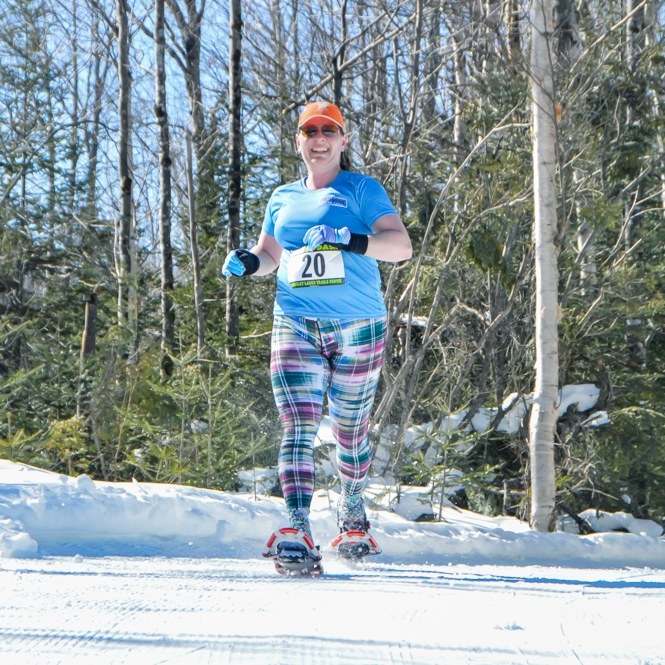Pineland has my heart. The 25k at the Trail Festival at Pineland Farms was my first trail race back in 2008. I had run my first marathon about six months prior and was so new at trail running that I was not properly respectful of the 25k distance. I mean, it's less than 16 miles, right?
I got a lot of lessons that first time. Shorter races can be harder than longer races. Trail running is its own sport and culture. Heat is hard and dehydration is a Whole Thing. But I fell in love with the sport and have returned several times over the years, learning something new about myself or about the sport every time.
This was my first time back in a few years. There's a new RD and a pandemic since I last did Pineland. I expected lessons in how aid stations have changed since Covid and in what it’s like to run a familiar race that has been rerouted. I got those, but it’s Pineland, so the course still had something for me to learn.
This year’s lesson was about really looking a DNF in the eye. I rolled my right ankle around 7k, which sent me down and off the trail. I managed to roll when I fell to disperse the impact but I scraped a shin and my upper back. Not only did I roll fully onto my back, but I managed to slide about a yard in pine needles and dust.. For those of you familiar with the course, I fell on Gloucester Hill. No, not that steep part at the top and no, not that steep part at the bottom. I tripped over literally nothing on that little plateau between those two ugly downhill pitches.
I laid on my back for a minute, looking up at the trees and wondering if my day was over. I decided to get up, have a snack, walk five minutes (if I could) and make a decision then. My ankle was ok to bear weight and to walk, so I used the walk to assess myself physically and emotionally. In my experience, 250 calories and a nice walk fix a whole host of problems. I was about to learn if mid-race injury was one of them.
I decided to attempt a finish. If I felt an increase in pain or instability, I would stop. If I felt myself getting tired or clumsy, I would stop. If it stopped being fun, I would stop.
I had a slow finish. My aid station visits were efficient, if only because the aid stations have changed a lot since COVID. I missed dipping my hand into a bowl of loose Swedish Fish and even more, I missed the welcoming vibe of folks making PB&J's in the woods. There was enough prepackaged nutrition to supplement my Tailwind and I used more than I expected to because I was out on the course longer than I anticipated. Gotta fuel the run, even when it's slow.
And it was so slow that Bea Q was getting worried about me. I convinced her to join me this year and then repaid her by making her bake in the sun at the finish while a tootled along in the woods. I adore in in large part because she is such a supportive running partner--she grabbed me some frozen berries from a food tent while I sat down and took my shoes off and then picked off pine needles that were still stuck to my back (eleven miles later!) while we compared our runs.
My ankle looked a little swollen on the ride home, was stiff and more sore the next morning and needed some ice and compression for a few days. I've taken some time away from impact, but have been doing some recovery work at the gym. I’m still learning my DNF lesson though. I’d be further ahead in my inflammation process if I had stopped running, but my pain levels and mobility are totally on track. Pineland wasn't my "A" race this year and while I don't think I made an error by finishing, I needed the reminder that the decisions you make in a "B" race have downstream effects on your season and can support or undercut an "A" race.
So was the finish worth it? Probably: not for the glory or the bragging rights, but for this new lesson in what my body can handle. I might take the DNF next time, but I will have a clear experience to inform that decision.











